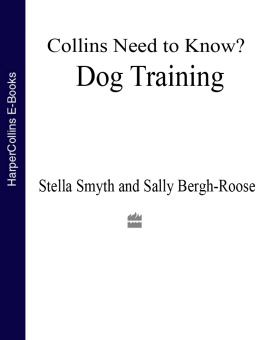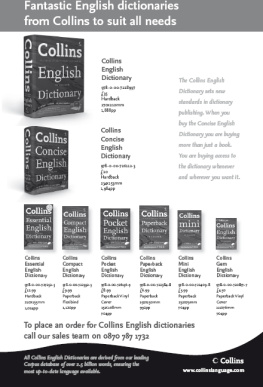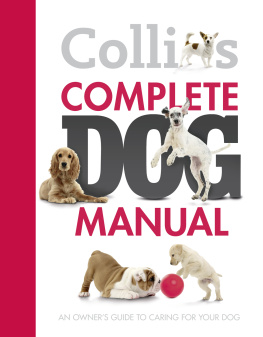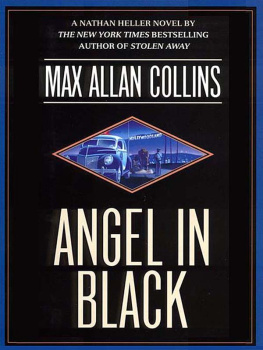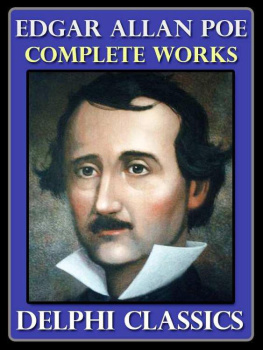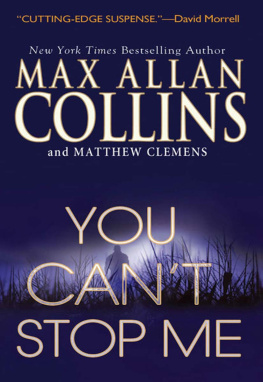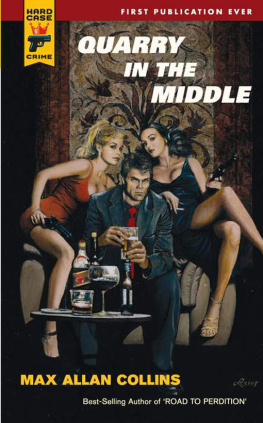Allan Collins - The Complete Guide to Functional Training
Here you can read online Allan Collins - The Complete Guide to Functional Training full text of the book (entire story) in english for free. Download pdf and epub, get meaning, cover and reviews about this ebook. year: 2012, publisher: A&C Black, genre: Romance novel. Description of the work, (preface) as well as reviews are available. Best literature library LitArk.com created for fans of good reading and offers a wide selection of genres:
Romance novel
Science fiction
Adventure
Detective
Science
History
Home and family
Prose
Art
Politics
Computer
Non-fiction
Religion
Business
Children
Humor
Choose a favorite category and find really read worthwhile books. Enjoy immersion in the world of imagination, feel the emotions of the characters or learn something new for yourself, make an fascinating discovery.

- Book:The Complete Guide to Functional Training
- Author:
- Publisher:A&C Black
- Genre:
- Year:2012
- Rating:5 / 5
- Favourites:Add to favourites
- Your mark:
- 100
- 1
- 2
- 3
- 4
- 5
The Complete Guide to Functional Training: summary, description and annotation
We offer to read an annotation, description, summary or preface (depends on what the author of the book "The Complete Guide to Functional Training" wrote himself). If you haven't found the necessary information about the book — write in the comments, we will try to find it.
The Complete Guide to Functional Training — read online for free the complete book (whole text) full work
Below is the text of the book, divided by pages. System saving the place of the last page read, allows you to conveniently read the book "The Complete Guide to Functional Training" online for free, without having to search again every time where you left off. Put a bookmark, and you can go to the page where you finished reading at any time.
Font size:
Interval:
Bookmark:
FUNCTIONAL
TRAINING
Allan Collins

This was not part of the original list, but was added later (2004).
Pre-competitive and competitive phases are listed in brackets because these would not be applicable for the average client who does not compete in sports. For athletes, this would also vary greatly depending on whether they are looking to peak for a particular competition (World Championships or Olympics) or for a season (such as in football and rugby).
Performed heels raised to activate VMO with full depth, and assuming limited ankle dorsiflexion.
Performed with front foot raised on step for VMO activation.
Performed with feet turned out.
Performed close grip with rotation
Performed with a biacromial grip
Barbell
Some heavy rock
Performed against a partner
Barbell
Note
While every effort has been made to ensure that the content of this book is as technically accurate and as sound as possible, neither the author nor the publishers can accept responsibility for any injury or loss sustained as a result of the use of this material.
Published by Bloomsbury Publishing Plc
50 Bedford Square
London WC1B 3DP
www.bloomsbury.com
Copyright 2012 Allan Collins
This electronic edition published in 2012
ISBN (print) 978 1 4081 5214 0
ISBN (EPDF) 978 1 4081 8018 1
ISBN (EPUB) 978 1 4081 8020 4
All rights reserved. No part of this publication may be reproduced in any form or by any means graphic, electronic or mechanical, including photocopying, recording, taping or information storage and retrieval systems without the prior permission in writing of the publishers.
Allan Collins has asserted his right under the Copyright, Design and Patents Act, 1988, to be identified as the author of this work.
A CIP catalogue record for this book is available from the British Library.
Acknowledgements
Cover photograph Shutterstock
Inside photographs Mike Harrington,
Getty images,
Istock image bank,
Cybex International,
Jordan Fitness and The Mendip Press Ltd
For details about individual photo copyright, please contact the publisher
Designed by James Watson
Commissioned by Charlotte Croft
Edited by Sarah Cole
I would like to thank all of those who have directly and also indirectly helped in the development of this book. For all of the clients, athletes and students I have worked with and taught over the many years in this industry, thank you, I have learnt a lot from you Im sure I have learnt as much from you as I have passed on to others. I would also like to pay appreciation for all of the hard work by Sarah Cole and the rest of the team at A&C Black and for Charlotte Croft for her foresight in commissioning this book.
Thank you to my work colleagues and friends, Leon, Marc and Alex who have provided me with valuable inspiration, both on the technical and the business side. It is still my pleasure to read, listen and watch other coaches like the late Mel Siff, Charles Poliquin and Anthony DiLuglio, who continue to inspire me. I would like to thank my friends and family for all of their continued support, both through the highs and lows I would not be the person I am or have reached the successes I have without your influence.
And lastly I would like to thank Jenny, my long term partner, for all of her hard work with this book reading, rereading, and editing where needed and for encouraging me during the long days and late nights of writing, you are both a muse and a rock.
I hope you enjoy this book, and to help you implement the principles and exercises, equipment is available from Jordan Fitness, www.jordanfitness.co.uk and additional resources are available from my site, www.allancollins.me .
The concept of functional training has been floating around the fitness industry and among those involved in the strength and conditioning of athletes for many years. It is one of the most dominant fitness concepts of the last 20 years, and shows little sign of diminishing. Every manufacturer and retailer wants to describe their products as functional, every instructor wants their personal training sessions to be functional, and every training provider wants to teach their concept of functional training. The definition of functional refers to something being able to fulfill its purpose or function, and so in relation to exercise prescription or fitness, functional training could then be described as training that means you are able to fulfill your purpose or function. A more complete definition of functional training is:
The execution of specific exercises that have a positive carryover or benefit to health or the performance of the persons daily tasks, their occupation or their sport, or for improved resilience to injury.
Having studied the training methodologies popular today, it soon becomes clear that there are still questions regarding functional training and there are many conflicting opinions among the various training gurus including:
Are bicep curls functional?
Should seated leg extension and leg curl exercises be included within a functional training programme?
Do stability balls improve functional ability or not?
Is the barbell bent over row one of the best pulling exercises?
Should I squat all the way down, only to 90 degrees or with thighs parallel to the floor?
These questions and many more will be addressed throughout this book to allow the reader to truly understand what functional training means and how it is effectively applied.
It is not the acquisition of knowledge that is important, it is more the application of knowledge.
There are many forms or methodologies of training that all claim to be functional, yet they vary tremendously in exercise selection and programming. These will all be discussed in greater detail further in this section but here are the main types:
Unstable surface training (using stability balls, BOSU, discs, foam pads, etc.)
Multi-planar training (such as the Gray Institute method of training, and the various duplicates of this method)
Olympic weightlifting (exercises such as the barbell snatch, clean and jerk, modified Olympic lifts, Olympic pulls and assistance exercises)
Unconventional training (using sandbags, conditioning ropes, hammers, Indian clubs)
Traditional resistance training (including free-weights and fixed path machines)
Modified strongman training (using sleds, log bars, super yokes, Atlas stones and tyre flipping)
Many other methodologies including kettlebell, medicine ball and bodyweight suspension training.
In order to gain an understanding of how we should train, we need to understand why we train the way that we currently do. There is a phrase that encapsulates this notion: to understand where you are going, you need to know where you have been.
Those who dont learn from history are doomed to repeat it.
George Santayana, 1905. The Life of Reason, Volume 1
Functional training is not a new concept, in fact it has existed for thousands of years. Fitness training originated from the need to improve the athletic performance of soldiers. Ancient warriors and soldiers needed to combine both strength and skill if they were to survive. They had to have the ability to fight in hand-to-hand combat, to throw deadly weapons, to run towards battle or to ride into battle. An unfit soldier who could not perform these skills in battle due to lack of strength, power or endurance was not likely to survive for long out on the battlefield. Therefore, fitness and strength endurance events were created to provide the training necessary to survive long battles. This, in turn, led to the creation of the ancient Olympics.
Font size:
Interval:
Bookmark:
Similar books «The Complete Guide to Functional Training»
Look at similar books to The Complete Guide to Functional Training. We have selected literature similar in name and meaning in the hope of providing readers with more options to find new, interesting, not yet read works.
Discussion, reviews of the book The Complete Guide to Functional Training and just readers' own opinions. Leave your comments, write what you think about the work, its meaning or the main characters. Specify what exactly you liked and what you didn't like, and why you think so.

